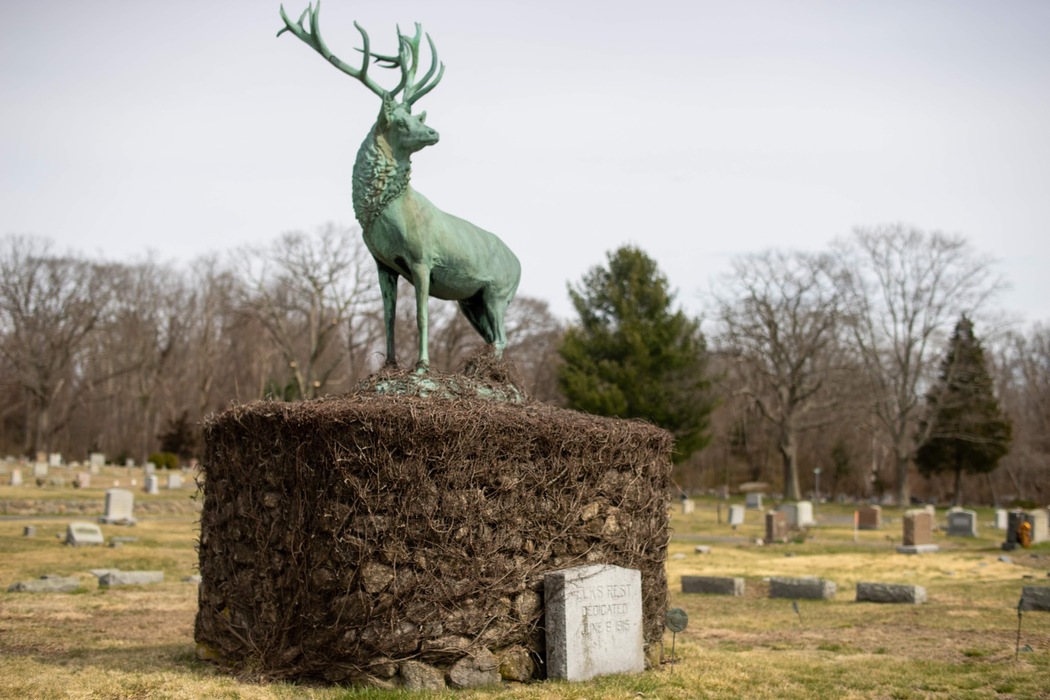Just because our favorite area museums are temporarily closed doesn’t mean we can’t consume art here on the North Shore. The region is rich with public outdoor sculptures, often softening into the backgrounds of our daily routines. These treasures tell fascinating stories if we only take the time to look more closely.
—
Memorial Gates to Lavinia Farnham
Ridgewood Cemetery, North Andover
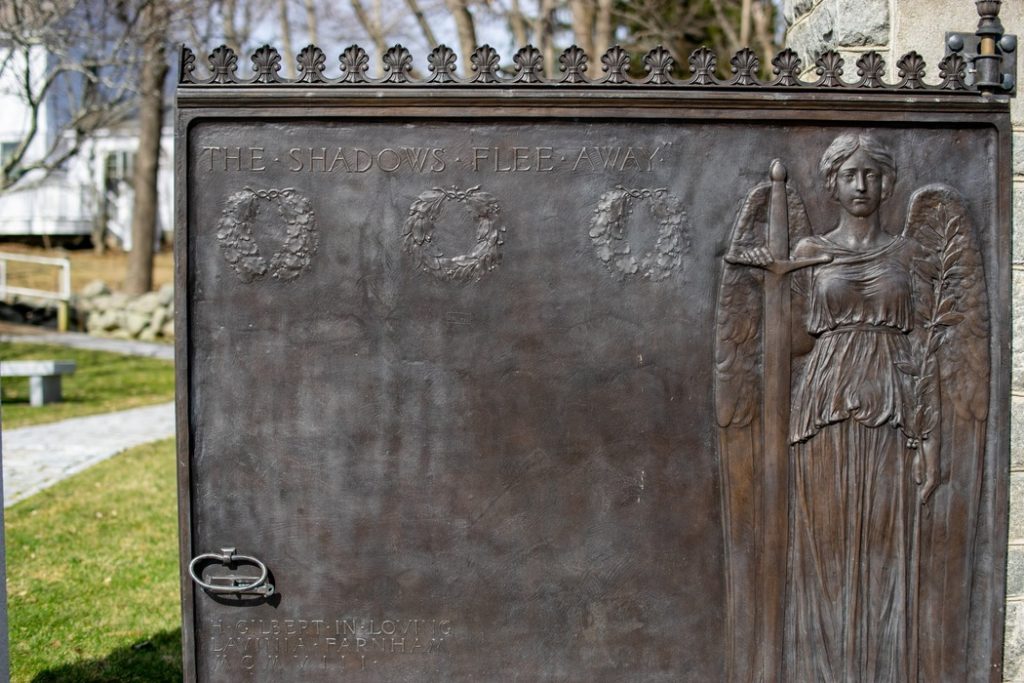
Traffic moves so quickly on Salem Street, it’s easy to miss the entrance to the private Ridgewood Cemetery near North Andover center. But the spectacular bronze doors flanking the entrance are worth slowing down for a closer look. The gates, erected in 1908, commemorate an orphaned nephew’s love and respect for the maiden aunt who adopted him and raised him as her own. When she died in 1894 at the age of 88, her bereaved nephew George Holley Gilbert published a book titled In Memoriam: Lavinia Farnham with letters and notes attesting to her piety, kindness, and good works. He erected the gates in 1908 in her memory, adorned with angels, wreaths, and a quote from the Bible’s Song of Solomon, “Until The Day Break And Shadows Flee Away.”
—
Roger Conant Statue
Salem Common, Salem
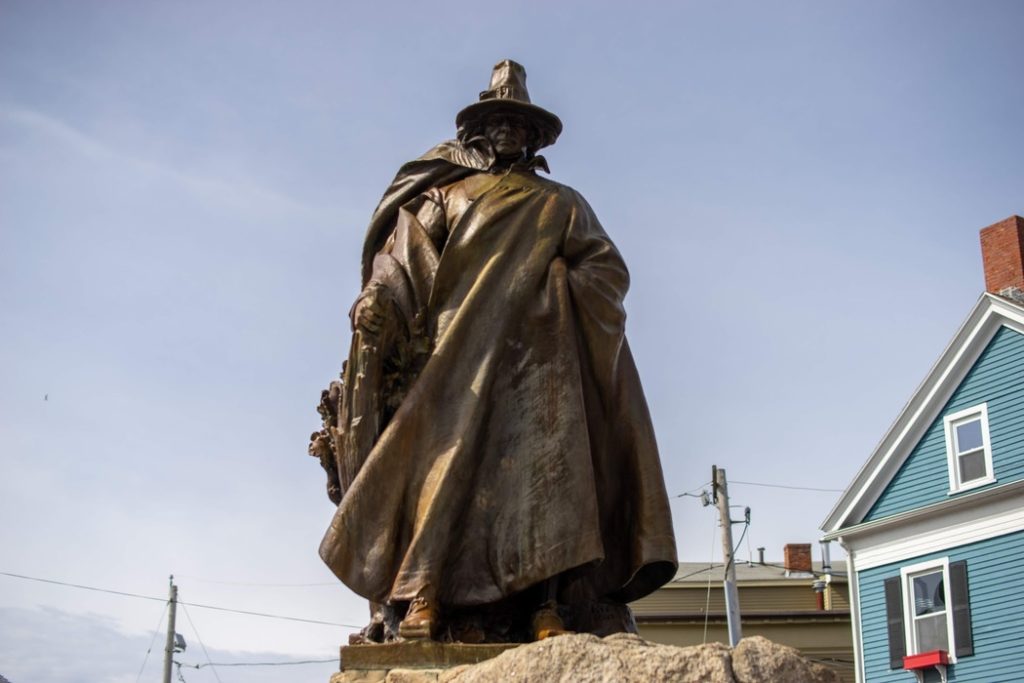
The imposing figure of Roger Conant glaring down at Salem Common is often mistaken as a memorial to the Witchcraft Hysteria. In truth, Conant arrived in the colonies long before the Witchcraft Hysteria of the 1690s, emigrating from England in 1623 with his wife, Sarah, and son, Caleb. The statue honors the integral role he played in establishing the communities of Salem, Peabody, and Danvers and his term of Governor from 1626 to 1628. In 1913, the Conant family approved the statue by sculptor Henry Hudson Kitson. Kitson was chided by Harvard Professor Chandler Rathfon Post in his book History of European and American Sculpture (Harvard University Press, 1921) for Roger Conent‘s close resemblance to Augustus St. Gauden’s 1887 statue The Puritan that stands in Springfield.
—
The Elk
Beechbrook Cemetery, Gloucester
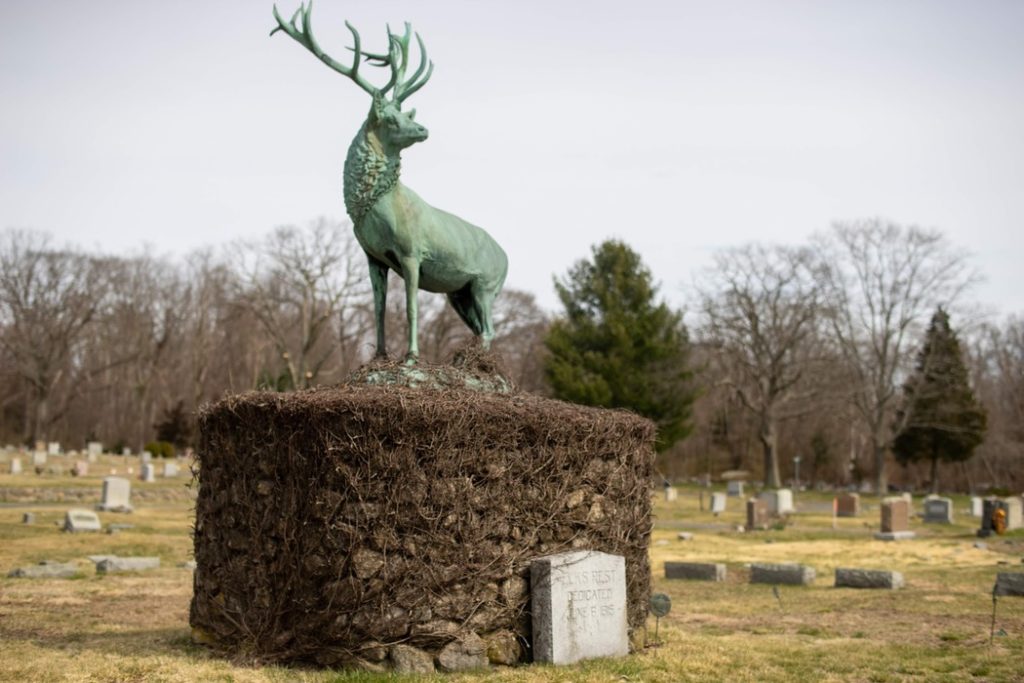
In an unexpected pocket of tranquility off busy Route 133 in Gloucester, Beechbrook Cemetery is the final resting place for many of Gloucester’s fishermen and members of the Benevolent and Protective Order of Elks Lodge #892. In the center of the cemetery, a magnificent bronze stag keeps a vigilant watch over the well-tended plot known as an “Elks Rest” atop a massive ivy-covered plinth. Sculptor Eli Harvey of Ohio created the first distinctive elk sculpture in 1904 and since then, they may be found in many similar “Elk Rests” throughout the United States.
—
Joan of Arc
Washington and Middle Streets, Gloucester
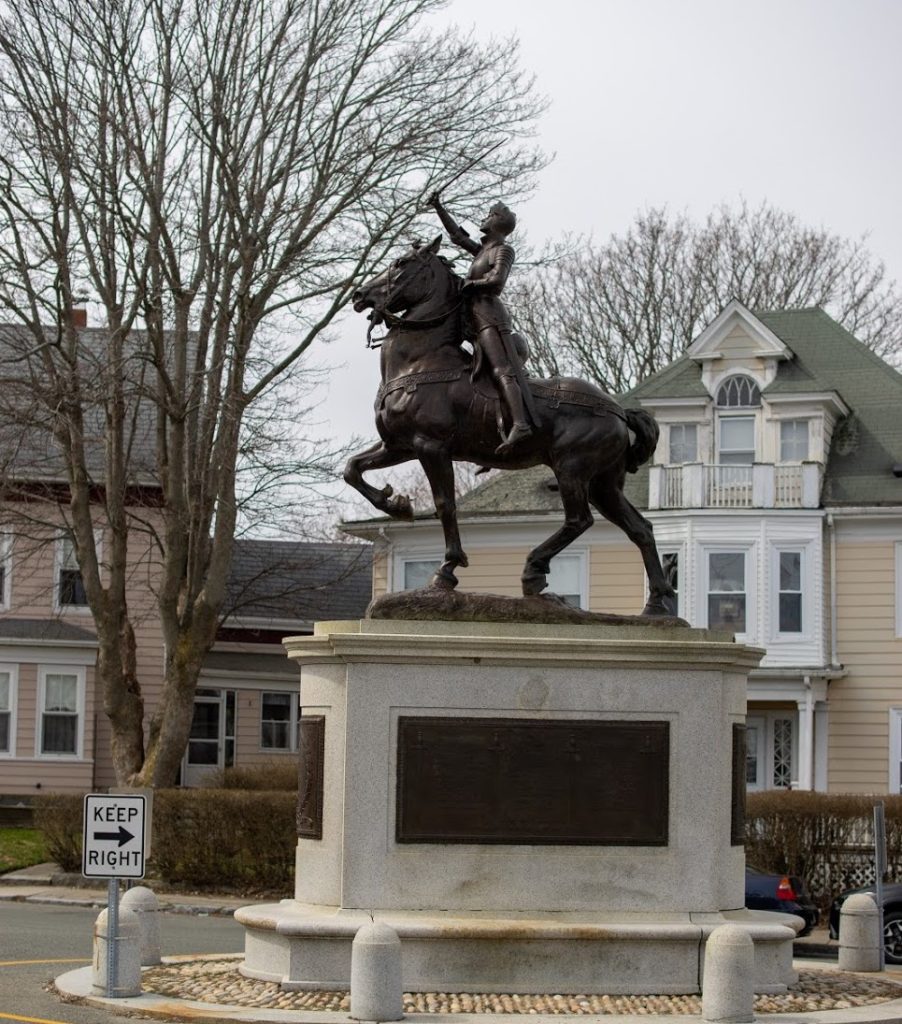
Renowned sculptor and philanthropist Anna Hyatt Huntington created the dramatic sculpture of Joan of Arc atop a granite base designed by Frederick Hall overlooking the traffic circle at Washington and Middle Streets in Gloucester. The statue was erected in 1921 to honor Gloucester’s contribution to World War I. Huntington worked out of her studio near Annisquam for many years, becoming one of the pre-emiment American sculptors of the early 1900s. Copies of the statue can be found in Quebec, New York City, San Francisco, and Blois, France.
Historian Joseph Garland wrote that the magnificent steed in the statue was actually modeled after a workhorse from the East Gloucester fire department. Today, the statue appears to sit at an odd angle, with the horse’s rump facing oncoming traffic. But back in 1921, before the A. Piatt Andrew Bridge was built and Route 128 connected Gloucester to the mainland, the only access was via Route 127 over the Blynman Bridge between downtown Gloucester and Magnolia. Viewed from that route, the Joan of Arc statue gave travelers an impressive welcome to the city.
—
First Settlers of Newbury
Lower Green, Newbury
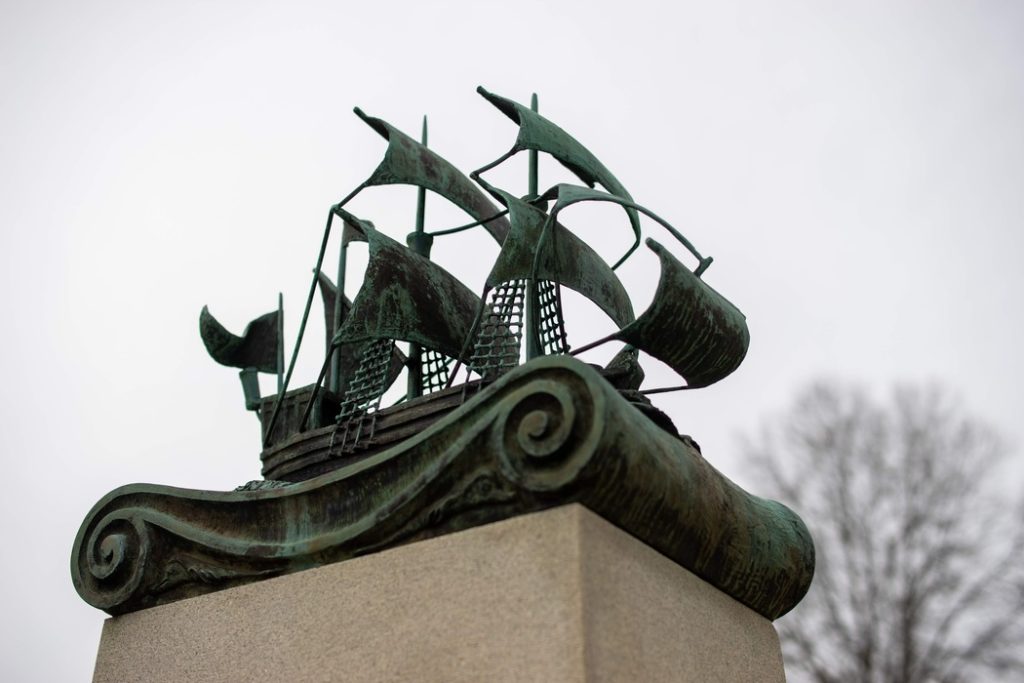
Don’t blink or you’ll miss this intricately crafted memorial to the first settlers of Newbury and their descendants along Route 1A in Newbury. Gracing a granite pedestal, a bronze replica of the Mary and John under full sail honors the intrepid British pioneers who put their trust in the 400-ton ship to carry them safely to Agawam (now Ipswich) in 1634. The Mary and John was a true ocean workhorse, successfully completing four trans-Atlantic passages between 1607 and 1634.
Unfortunately, the original 150 pound bronze sculpture forged by the Woodland Foundry was never fully secured to the pedestal and it was stolen in 1974. Local historian Burt Noyes led efforts to raise funds for a replacement and the monument with the current version of the Mary and John created by the Paul King Foundry was rededicated in 1976.

